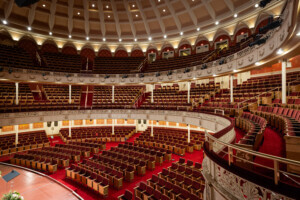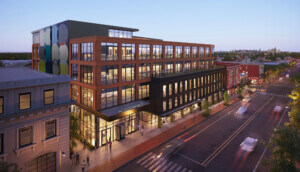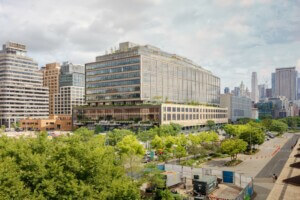Though digital modeling and documentation tools have been an integral part of architectural practice for decades, until recently, visualization tools hewed closely to traditional elements of two-dimensional representation. Several firms and independent practitioners, however, are striving to adopt virtual reality (VR) as a design tool.
At the corporate level, established firms like Gensler and NBBJ are setting up in-house VR departments and standing to benefit from their corporate heft and connections.
NBBJ’s Seattle office recently launched a business partnership with construction industry start up Visual Vocal to incubate and develop what the firm referred to as a “breakthrough virtual reality productivity platform.” The tool aims to streamline the firm’s collaborative design process by allowing clients on-demand access to project information and design updates. NBBJ Managing Partner Steve McConnell described the firm’s approach in a press release: “This partnership will radically shift the way design feedback is sourced and integrated into projects, and the speed at which it can be done. As a result, we can more broadly and deeply engage project stakeholders.… Virtual reality will deepen design discourse and bring together communities in new and exciting ways.”
Gensler’s Los Angeles office has taken the opposite approach, creating a virtual reality department that engages with existing VR technologies, looping the latest design tools into Gensler’s corporate workflow as they come online. Gensler’s San Francisco office utilized VR to create a highly detailed climate model as it designed a new headquarters for computer graphics card maker Nvidia. Alan Robles, experience designer in charge of VR technologies at Gensler’s L.A. office, described the firm’s efforts as an attempt to streamline the use of VR as a design tool, calling VR the “next logical evolution for rendering technologies.” Gensler integrates VR into its workflow early in the conceptual diagram stage while also pairing Unity software with Autodesk Revit later in the process to bring designers and clients directly into a working digital model where design options can be updated in real time.
The firm’s VR capabilities are also being utilized in the ongoing design of the new Los Angeles Football Club stadium in South Los Angeles, where Gensler’s team was able to integrate VR design approaches early into the design process to communicate possible sponsorship opportunities and overall project concept. VR is incorporated into the conceptual design phases, making Gensler’s approach toward VR basically one of normalizing the technology as a design tool. The evolution of project concepts in VR takes off from there, with the technology being deployed as necessary to convey design intent. These efforts result in a custom app made by Gensler’s in-house team that clients can use as a personalized marketing and development tool.
Operating in a parallel stream, a school of emerging designers has taken up VR as a key visualization and production tool.
Güvenç Özel, principal at Özel Office, made use of VR in a recent competition proposal made for NASA. His NASA 3D-Printed Habitat project, runner-up in the competition, creates a VR environment to convey its design intention and functionality. The project, showcased at the Architecture and Design Museum’s recent exhibition, Come In! DTLA, allowed observers to wear VR headsets to explore the scheme: A space capsule 3-D-printed from martian rock and occupied as an operating base for astronaut-explorer scientists.
Özel, who spoke to AN via email, described VR’s potential impact on architecture in no uncertain terms, saying, “The immersiveness of these digital environments are becoming so convincing that they start to exist as environments in their own right. I am convinced that the architecture of our near future involves physical and digital spaces superimposed on each other, and will further blur the lines between what is interface design and what is architectural design.” Designer Devin Gharakhanian, in collaboration with VR specialist Nels Long, presented Room XYZ at this year’s One-NightStand L.A. showcase, utilizing VR to recontextualize an all-white room into a variety of experiences. The project, in a different iteration, places the viewer into a precise, virtual recreation of an elaborately staged room. For the two architecturally-trained artists, the works serve to explore existential architectural issues directly.
Adding to this inertia, is a growing stock of interdisciplinary, VR-focused coworking spaces and organizations that are coalescing across L.A., where the edges of the visualization, filmmaking, and architectural professions run into one another, like Virtual Reality Los Angeles, Navel.la, and RotoLab. With the recent announcement by computing giant Intel of a new collaboration with Microsoft aimed at developing VR capabilities for Windows-based machines and plans to open an L.A. research studio, the future of VR is here—and it’s very real.










